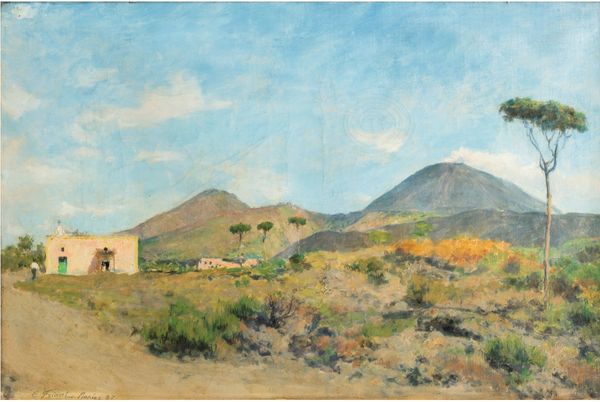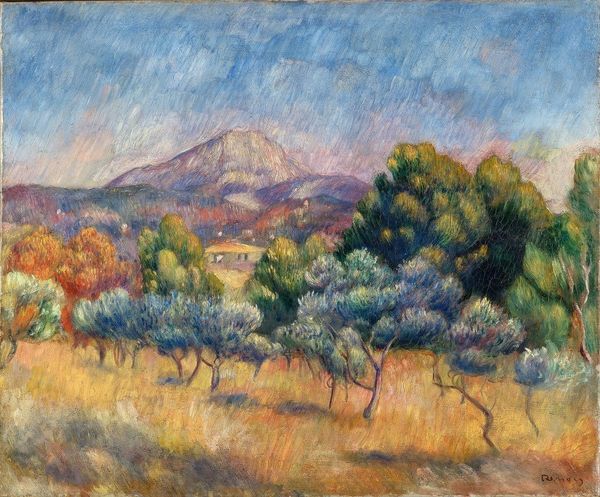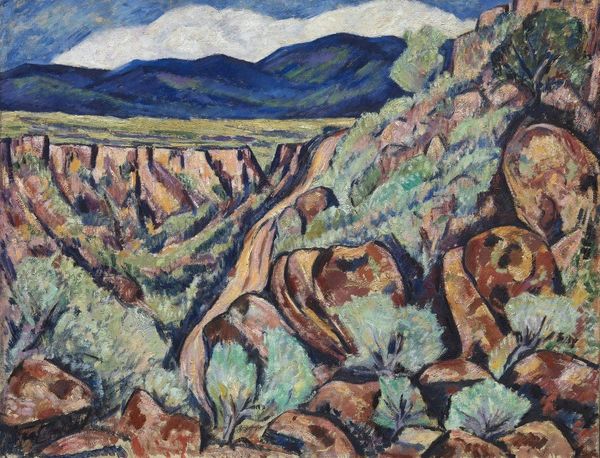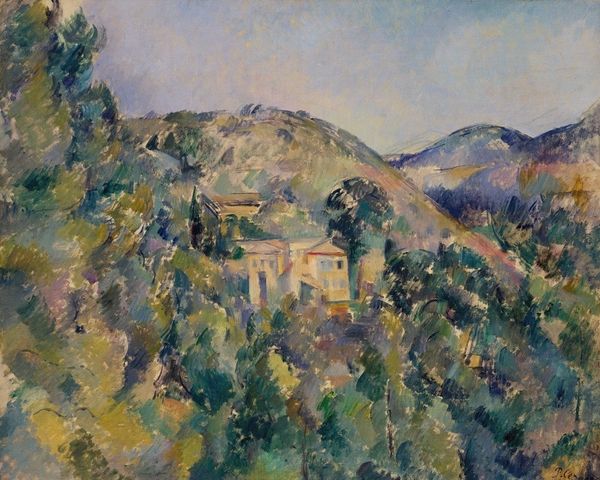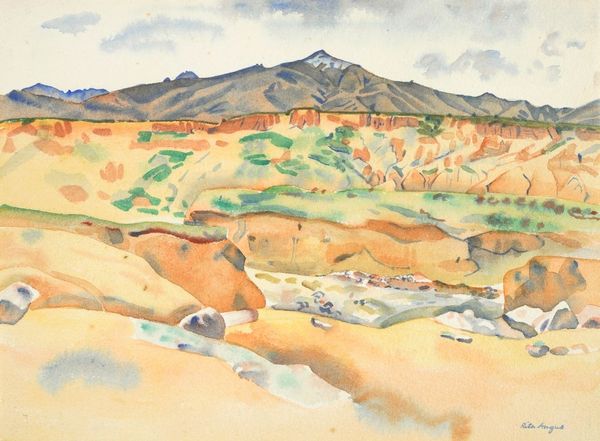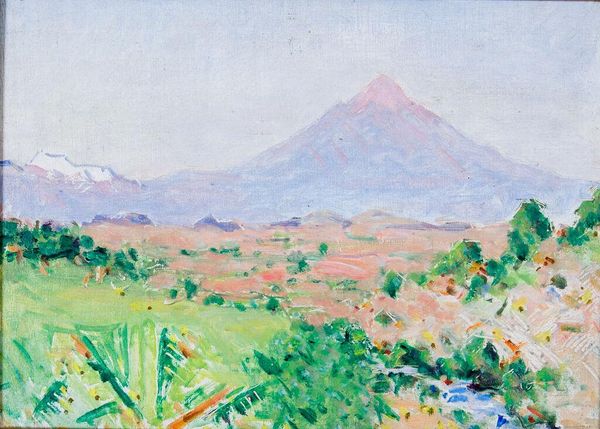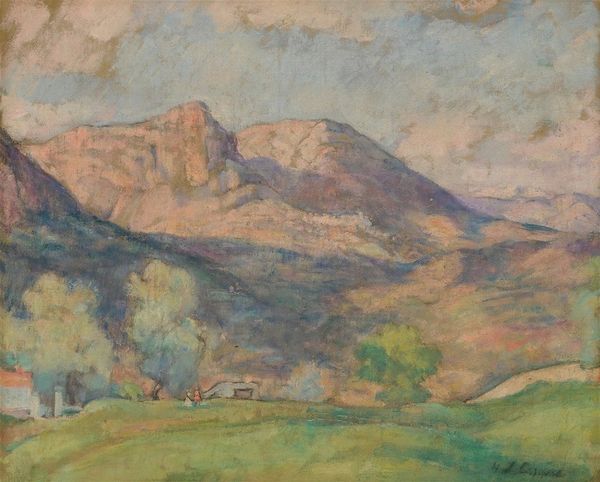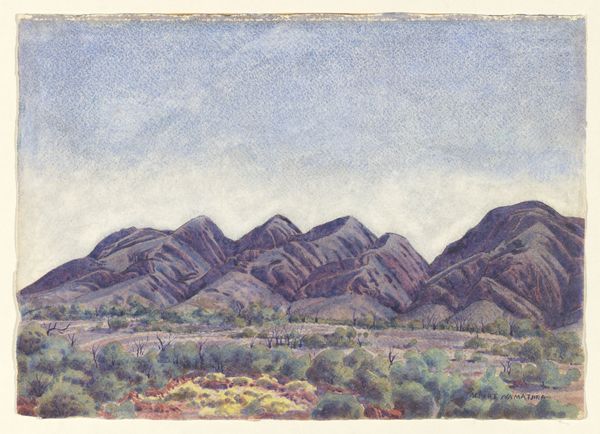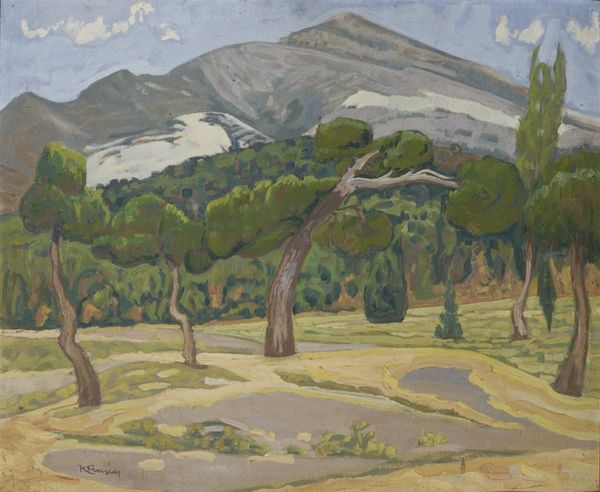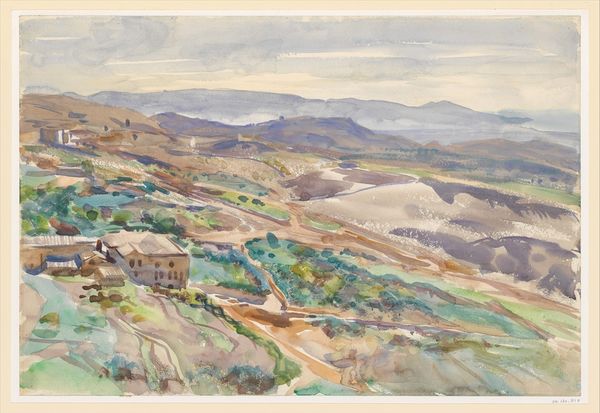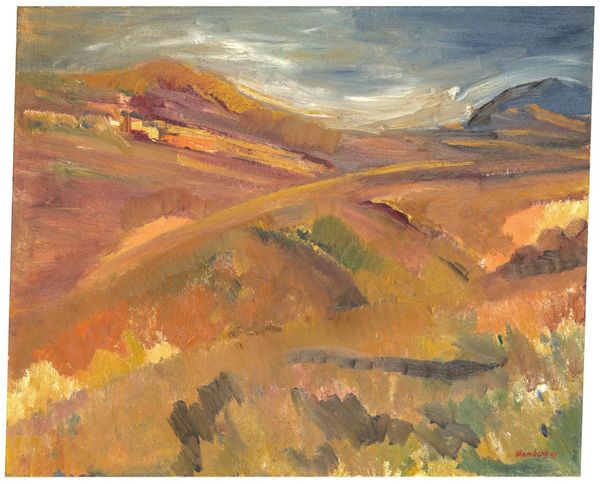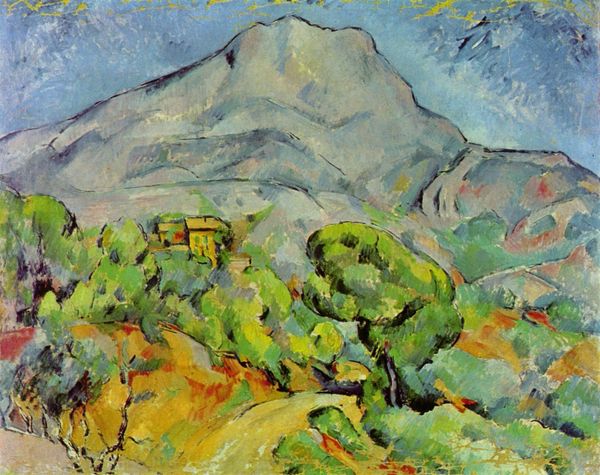
Dimensions: 60.0 x 74.5 cm
Copyright: Public Domain
Curator: This is Mathilde Battenberg's "Provence Landscape," created in 1914. It offers a look into her unique interpretation of plein-air painting, utilizing oil paints. Editor: It's fascinating; almost a deconstruction of a traditional landscape. There’s a palpable weight in the texture and materiality of the brushstrokes themselves. The earth tones seem to almost drag down the composition. Curator: That's an interesting reading. I think if we explore the sociopolitical landscape of the period, the piece speaks to the anxiety before the first World War and industrialization of nature. Battenberg translates this disquiet to canvas using fractured forms. Do you notice the ambiguous figures, suggesting societal fragility? Editor: Yes, now that you mention the composition, I start to perceive the effect she gets using rough strokes and blocks of color—especially within the context of impending global turmoil. I'm curious about her choice of location, Provence. The light, the colors… Were there textile factories influencing pigment production there at this time, that maybe we could think about here? Curator: Absolutely. Provence represented more than a location for Battenberg; it embodies a space removed from industrial forces of change. Yet she wrestles with her historical conditions in the subject of painting itself: you can read this artwork as the social and psychological landscape. Her painting becomes a tool, resisting normative gender expectations prevalent within the established art world. Editor: It’s definitely hard not to interpret all these meanings together in viewing this art, given how directly the art is concerned with the relationship to physical, social, economic, and political space in painting the land, at once inviting to contemplate in art and difficult, especially knowing it was during the eve of so much catastrophe, a world changing event itself made possible by new technological advances and their productive and consumptive contexts. Curator: Precisely! This art is a microcosm of its time. Understanding how Battenberg fits within intersecting roles and histories can shape our interpretations and illuminate broader conversations about art and its societal influences. Editor: It highlights a unique period of reflection about landscape as the world around became progressively modernized—leading us to consider, where does craft end and industrial process begin, if at all?
Comments
No comments
Be the first to comment and join the conversation on the ultimate creative platform.
